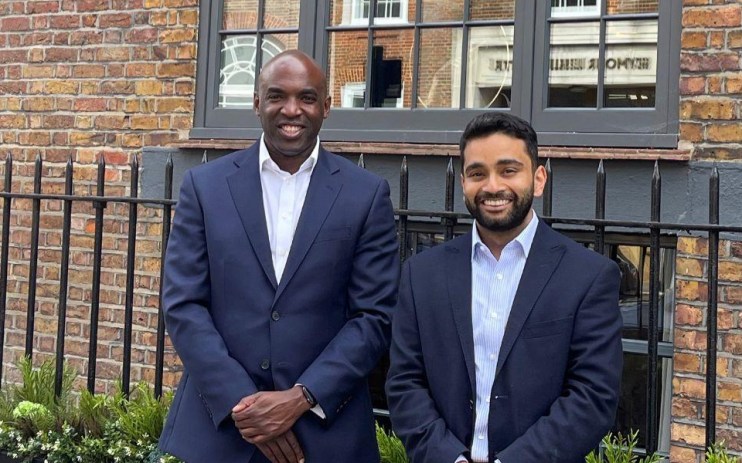The property developers building community through Gaia’s Garden

Continuing my series of conversations on culture and commerce, I am diving deep into the social value of a project that sits in the heart of London: Gaia’s Garden. This “accessible and free community garden” on the edge of Smithfield Market and off the Holborn Viaduct is built by property developer Dominvs Group, who say its purpose is to “educate Londoners about sustainable practices,” hosting live music, workshops and events.
The temporary garden is a “meanwhile use” for the space. According to our property reporter the group has received permission to build a hotel on the site but is staying open-minded about its future use.
I spoke to Jay Ahluwalia, director of Dominvs Group, and Wesley Ankrah, director for social value and community investment.
Explain your work with the community
Jay: As developers we make an investment case for something that is built for the community and some of that conflicts… there is this tension we have in our business at the moment but I’m quite excited about this. It feels innovative. We are proud that we are taking a step to defeat the perception that developers have. We’ve always been quite philanthropic as a family business but that hasn’t always joined up with the impact we are creating along the way – our family’s values don’t tie in with this, so having a director of social value now in Wes, who can navigate this and ensure we are delivering on social good, is a really positive step.
Wes: There’s no metric to quantify this opinion, but our approach to Gaia’s Garden puts us in a position with the City of London Planning officers to enable more projects like this, to demonstrate the need for cultural space on the ground floor with all the pre-development programming and engagement from young people. We have to consciously leave enough flexibility in the planning to shape the strategy with the creatives utilising assets of the city for social good.
Is there a network of likeminded developers?
Wes: There is beginning to be. Prior to my role with Dominivs I became a thought leader in this space and would consult on projects to enable more sustainability. I work with a network of property developers to ensure they are meeting the needs of the community and that they are creating a sustainable practise. I have now gone in house at Dominvs Group and brought this to our projects. Together we are advancing the vision of what this could be and identifying the long term positive effect cultural, thoughtful programming will have on the nexus of culture and commerce.
The longer term social value always comes in the end user’s occupation. Over a period of time, perhaps 50-60 years of a cultural space… there will be millions of pounds of social value for multiple stakeholders, so that’s the mindset I have brought to Social Value UK as the advocacy membership group.
How are you capturing the value and experiences of young people?
Wes: We can’t retro-fit projects but we can bring our learnings to new acquisitions and we can bring forward these ideas into how we inform our design processes. In communities where most developers are in regeneration zones, young people need to be highly considered in that decision making process. Through Gaia’s Garden we naturally created more engagement with young people than anyone else has done before. We have a lot to learn but it’s a good place to be.
What does best practise internationally in this area look like?
Wes: There are a number of standout social impact projects that we can all learn and draw inspiration from. Inspiring case studies include Brazil in the Favelas and the way they have engaged with young people. Regarding arts and culture there is the Restarting the Arts and Culture in Sweden policy which allocates funding for broadening participation in cultural life, and the design considerations of socialisation spaces in a student scheme in Denmark.
What have you learnt from Gaia’s Garden?
Jay: You have to be willing to rewrite the rules in order to break down barriers. You need resilience to deliver the programming. It’s a specialist skill to play the brokering role between artists and the commercial restrictions and licensing laws that are in place.
To allow young people to access the area, to feel ownership over the programming and encourage volunteering, engagement and innovation, you need to be able to step back and allow the cultural space to evolve freely. Perhaps we stepped back a little too much as after a while we felt like we couldn’t be present, it was so much fun the young people didn’t want us around!
I can see why property developers go for a tokenistic approach to sustainability and culture because it is easier, you can manage the risk. The best is probably somewhere in the middle but we went right to the edge of what’s possible and that’s where you break new ground.
There is a conflict between a project being for the community but also investable and profitable. We are creating a paradigm which allows the two to sit in harmony. A cultural space needs to be able to generate income, too.
We have a call to action: connect with us because we’re just starting on this wavelength and open to ideas. We will do an audit of what is coming over the next couple of years so we are delivering to the needs of the community.